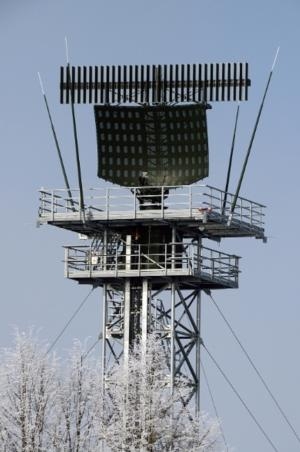Mon, Mar 16, 2015
Enhanced Detection Capabilities And Suppression Of Interference Signals On Its Next Generation Airport Surveillance Radar
Airbus Defense and Space has introduced new technologies in its latest air surveillance radar which give the ASR-NG (Airport Surveillance Radar Next Generation) advantageous air traffic control capabilities. The company has completed a demonstration in real scenarios in front of international customers which was testament to enhanced detection capabilities with a significant increase of detection range coverage to 120 NM. Other key features of ASR-NG are the complete mitigation of wind farm effects, a new Primary Surveillance Radar 3D height measurement and resistance against interference by 4G/LTE mobile phone signals.

“ASR-NG offers an extraordinary performance proven in an extensive test phase,” said Thomas Müller, head of Airbus Defense and Space’s Electronics business line. “With its new capabilities it addresses the most urgent and recent concerns of air surveillance and air traffic control customers.”
ASR-NG consists of a primary radar on the basis of a solid state transmitter and advanced signal processing technology for long-range surveillance. Its extreme sensitivity means that even very small objects such as mini drones, slow flying objects such as helicopters or even flocks of birds can be reliably detected and classified. Specifically developed algorithms allow for safe guidance of aircraft even in the vicinity of wind turbines, which is hardly possible with conventional air traffic control radar systems.
This extraordinary primary surveillance radar capability is combined with the MSSR 2000I (MSSR = Monopulse Secondary Surveillance Radar) secondary radar for automatic identification of individual aircraft. It meets the new air traffic control standards “Mode S” and “ADS-B”, which greatly improve aircraft identification queries and are currently being introduced in European airspace.
Airbus Defense and Space supplies air traffic control and identification systems in the military and civilian sector. Amongst others, the company equips the German Armed Forces’ airports with the ASR-S (Airport Surveillance Radar, S-Band) airport surveillance radar and delivers a complete approach control system for the military airfields in Switzerland. In addition, the MSSR 2000I secondary radar is deployed by the naval forces of Germany, France, Norway and Finland for military friend-or-foe identification. For civil and military air traffic control, those identification systems are used in countries such as Germany, France, USA, UK, Canada, Austria, Portugal, Bulgaria and the Philippines.
(Image provided by Airbus)
More News
Aero Linx: Model Aeronautical Association of Australia MAAA clubs are about fun flying, camaraderie and community. For over 75 years, the MAAA has been Australia’s largest fl>[...]
Touchdown Zone Lighting Two rows of transverse light bars located symmetrically about the runway centerline normally at 100 foot intervals. The basic system extends 3,000 feet alon>[...]
“Discovery and innovation are central to our mission at Virgin Galactic. We’re excited to build on our successful record of facilitating scientific experiments in subor>[...]
How To Get A Story On Aero-TV News/Feature Programming How do I submit a story idea or lead to Aero-TV? If you would like to submit a story idea or lead, please contact Jim Campbel>[...]
Student Pilot Reported That During Rotation, “All Of A Sudden The Back Of The Plane Kicked To The Right..." Analysis: The student pilot reported that during rotation, “>[...]
 ANN's Daily Aero-Linx (05.02.24)
ANN's Daily Aero-Linx (05.02.24) ANN's Daily Aero-Term (05.02.24): Touchdown Zone Lighting
ANN's Daily Aero-Term (05.02.24): Touchdown Zone Lighting Aero-News: Quote of the Day (05.02.24)
Aero-News: Quote of the Day (05.02.24) ANN FAQ: Contributing To Aero-TV
ANN FAQ: Contributing To Aero-TV NTSB Final Report: Cirrus Design Corp SR20
NTSB Final Report: Cirrus Design Corp SR20



